Montjoyer
From Grignan via the D541 road and then the D203 or via the D4 and the D550.
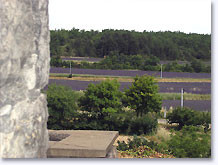
Surrounded by fields of violet lavender, Monjoyer is a peaceful agricultural village, located far from the crowds...
At the village entrance stands a large white church built in the 19th century.
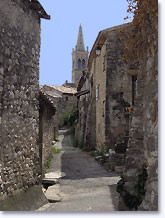
Then walk up the main street lined with beautiful old stone-built houses and you arrive in the square, with its "mairie", school, fountain and war memorials.
Montjoyer was owned by the Counts of Provence in the 13th century, but all it has kept from its medieval past are a few alleys with covered passageways, and a section of the defensive wall including a gate which must have been the entrance to the village.
But let's not forget the jewel of the municipality, the site not to be missed, i.e. the Abbey of Notre-Dame-d'Aiguebelle, a monastery founded by the Order of Cîteaux in 1137.
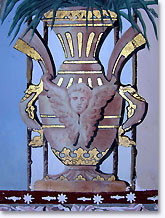
Snuggling in an isolated valley, surrounded by wooded mountains, and therefore faithful to the rule of Saint Benoît which recommended silence and withdrawal from the world, to this day the Abbey houses a Cistercian community of roughly thirty monks, aged from 30 to 89, who live on their own toil, help the poor as much as they are able and welcome those who wish to devote a period of their life to meditation.
Despite a few demolitions and many restorations, the abbey has preserved most of the medieval conventual buildings: church, cloisters, sacristy, chapter, monks' room, refectory, kitchens and the entire lay building.
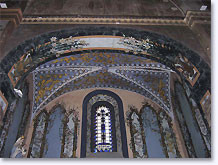
The abbey is not open to visitors; only access to the church is authorised.
But those who are interested can watch a video about monastic life. They will learn that the chapter is the community’s meeting room. Here a chapter of the Rule is read out (hence the name capitulum), on which the Superior then gives a commentary.
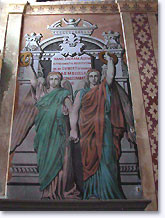
They will also learn that the scriptorium is a reading room and study, that the library contains 90,000 books and finally that in the cloisters the small columns are surmounted by capitals displaying a huge variety of foliage and crockets, comprising graffiti and inscriptions from the 14th century, while sentences taken from the Bible run all around the cornice.
The abbey church exudes an atmosphere of contemplation with its very thick walls, massive pillars, semi-circular arches, its ogival archways, and rare windows...
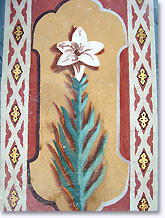
They will also learn that the scriptorium is a reading room and study, that the library contains 90,000 books and finally that in the cloisters the small columns are surmounted by capitals displaying a huge variety of foliage and crockets, comprising graffiti and inscriptions from the 14th century, while sentences taken from the Bible run all around the cornice.
The abbey church exudes an atmosphere of contemplation with its very thick walls, massive pillars, semi-circular arches, its ogival archways, and rare windows...
What to see
Abbey of Notre-Dame-d'Aiguebelle: 12th century Cistercian abbey.
Abbey church (transition gothic style, 12th century).
No tour of the abbey, but presentation of a video about monastic life, exhibition room.
Access to the church only.
Shop selling regional and monastic products.
Open every day from 10 to 11.45 am and from 2.30 to 5 pm, free of charge.
Leisure activities
Hiking
Accomodations
Holiday rentals
NEIGHBOURING TOWNS AND VILLAGES
Roussas (7km), Grignan (11km) and Montélimar (18km).

